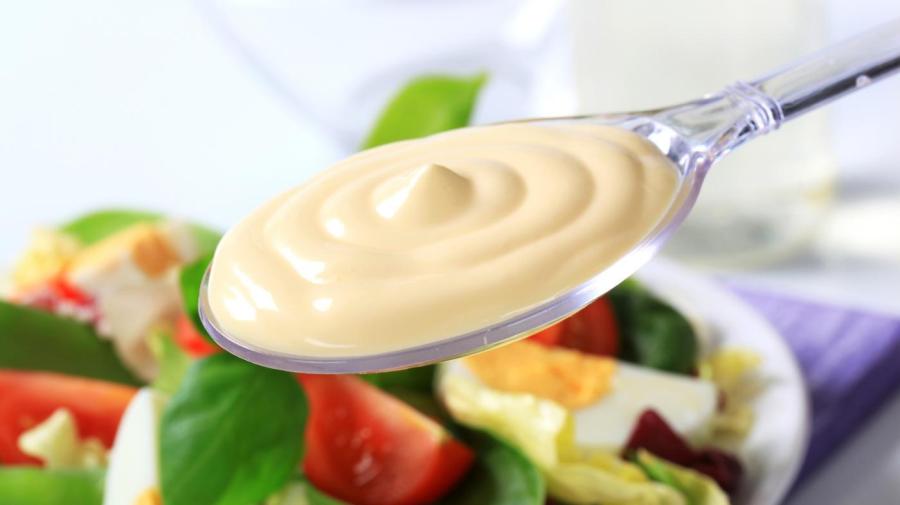What Is the Difference Between Mayonnaise and Salad Dressing?

The main differences between mayonnaise and salad dressing are vegetable oil content and flavor. Mayonnaise, which originated in 18th-century Spain, is an emulsion of egg yolks, oil and lemon juice or vinegar. Salad dressing which was created in the 1900s as a less-expensive alternative uses less oil and more flavorings.
According to the U.S. Food and Drug Administration, any product labeled as mayonnaise must contain at least 65 percent vegetable oil by weight. Plain mayonnaise does not contain many additional herbs, spices or sugar. Salad dressing blends mayonnaise with less expensive components, powdered egg products, high fructose corn syrup, cornstarch and herbs and spices such as mustard, paprika and garlic.





